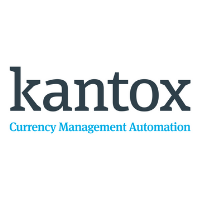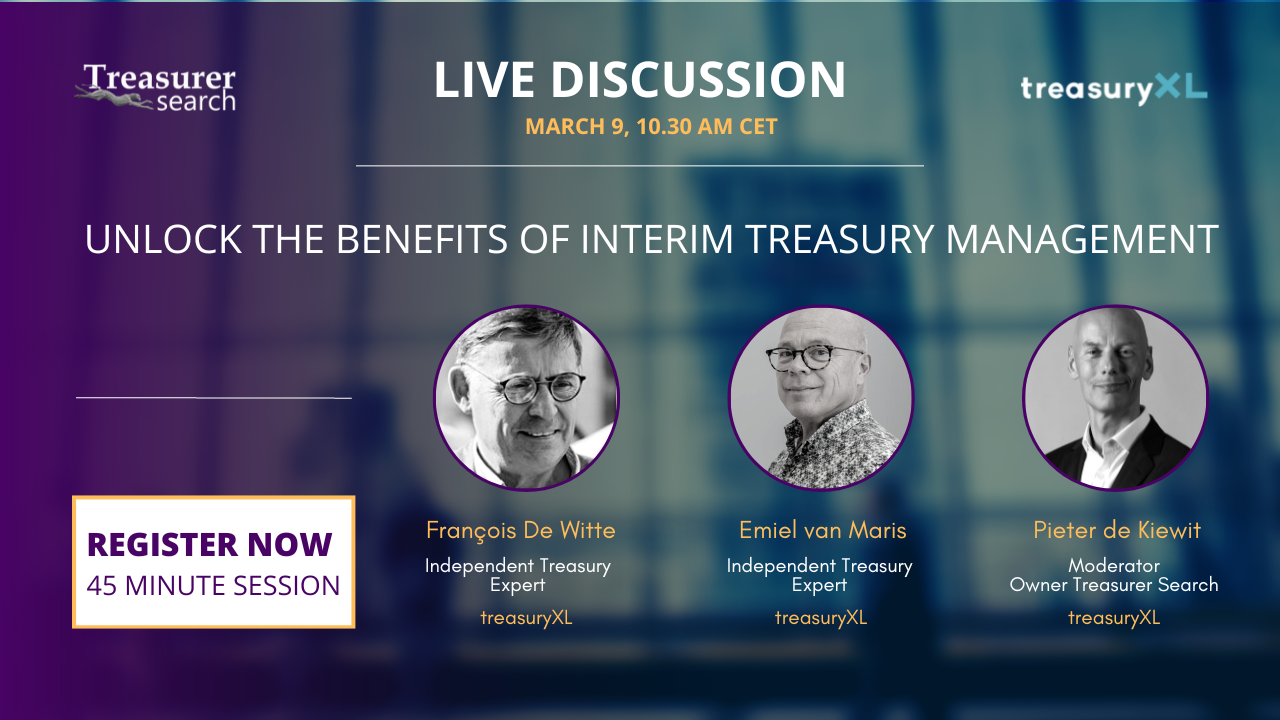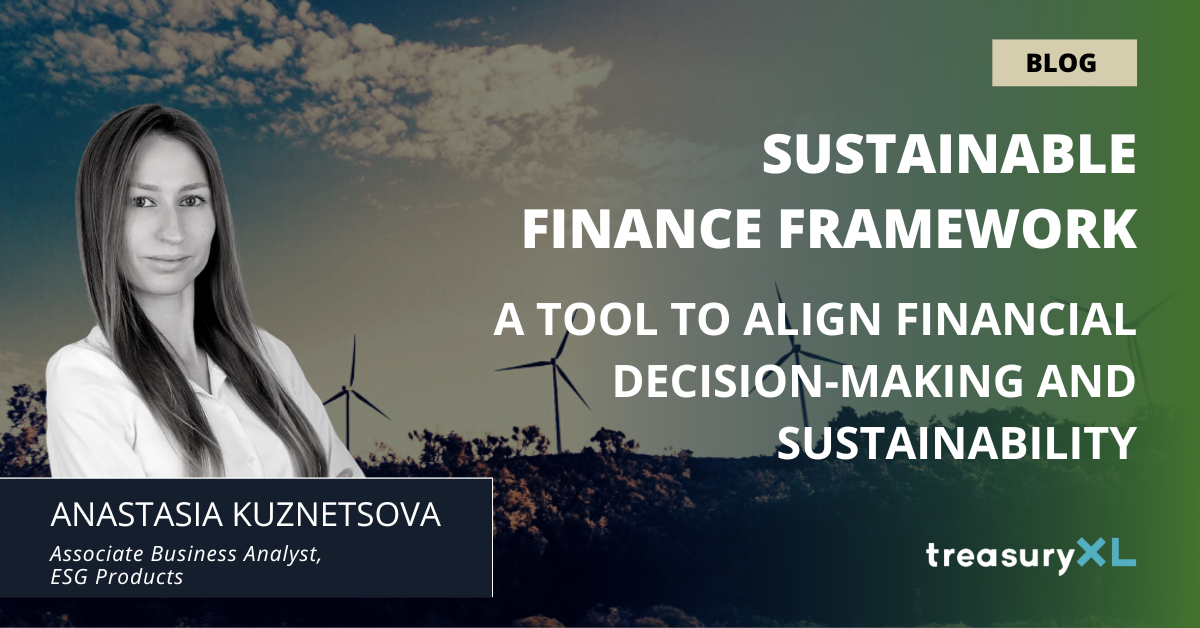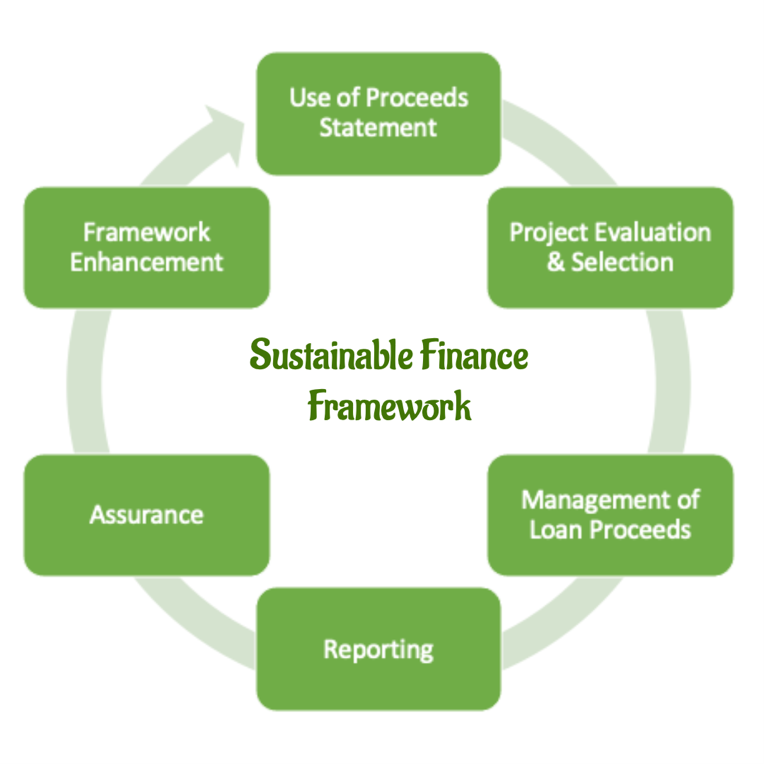Hedging Intercompany Loans: A New Way to Mitigate FX Risk
03-03-2023 | treasuryXL | Kantox | LinkedIn | “By using conditional stop-loss and take-profit orders, you can achieve significant savings in terms of the cost of carry.”
03-03-2023 | treasuryXL | Kantox | LinkedIn | “By using conditional stop-loss and take-profit orders, you can achieve significant savings in terms of the cost of carry.”
28-02-2023 | treasuryXL | Kantox | LinkedIn |
This episode of CurrencyCast dives into the impact of behavioural biases in currency management and how they impact financial decisions. You’ll learn about the most common biases that can affect decision-making, including conservatism, forward rate, overconfidence, and loss aversion biases. But fear not! The episode also provides solutions to mitigate these biases and optimise your currency management strategies.
Disclaimer: This information is being shared for informational purposes only and was originally published by Kantox (Source)
Discover how implementing automation solutions can help remove systematic errors and allow you to embrace foreign currencies, increasing profitability and fostering growth.
Don’t let inherent biases affect your work – watch the latest episode of CurrencyCast and take control of your currency risk management today!

23-02-2023 | treasuryXL | LinkedIn |
Download the comprehensive eBook on Treasury function, compiled by treasuryXL. This valuable resource covers a wide range of relevant topics including Treasury, Corporate Finance, Cash Management, Risk Management, and Working Capital Management.
Drawing on the expertise of Treasury professionals and their best practices, we have carefully crafted clear and concise articles that provide you with the most crucial information about the key topics in the world of Treasury.
In this eBook, we take a deep dive into each Treasury function and explore:
Whether you are new to Treasury or an experienced practitioner looking to expand your knowledge, this eBook is an essential resource that will help you stay up-to-date with the latest best practices and insights in the field.
We simply giveaway two presents for you! By signing up for our newsletter you will automatically receive the following in your inbox:
Subscribe, Join, Download and Relax.
Welcome to our community and have fun reading!

Director, Community & Partners at treasuryXL
17-02-2023 | treasuryXL | Kantox | LinkedIn |
Get ready for 2023 with our deep dive into the treasury fundamentals that will take over the currency management scene. All you need to know, from trends to technology, in one article.
Disclaimer: This information is being shared for informational purposes only and was originally published by Kantox (Source)
CFOs and treasurers are getting ready to face the many challenges of 2023. Finding the right approach to currency management will help them protect their company’s margins and adapt to the new reality.
In this episode of CurrencyCast, we sat down with our special guest, François Masquelier, for a complete session on the treasury fundamentals for 2023.
In this article, we will take you through:
Let’s analyse what upcoming currency management trends are going to be the main focus for treasurers this year.
When we take a look at recent European Treasury surveys, the PwC global annual survey and the last OECD survey or surveys, there is a common theme regarding the main focus for treasurers this year.
FX risk management is a top priority for corporate treasurers from 2023 onwards, right behind cash flow forecasting and digital transformation. This means that FX risk remains highly ranked by treasurers, and there are several reasons for this.
Sometimes CFOs do not always understand all the possibilities in terms of what we call optimizing forward points, that is to say, interest rate differentials.
The forward points may be a concern when there is a significant differential of interest, especially with exotic currencies. So it could be expensive to hedge certain currency pairs, depending on which side you are in. Sometimes those forward points could be in your favour, and sometimes could not be in your favour.
Treasurers with a favourable interest rate differential can decide not to hedge at all and just monitor the exposure. This is feasible, but as it is a highly manual task, the monitoring process of the open exposure can become quite tedious and inefficient.
However, the good news is that there exist certain solutions that allow them to dynamically manage your FX exposure. This way, finance professionals can reduce or mitigate the impact of the swap points and, ultimately, reduce the impact on costs.
The dollar and the euro remain important currencies, but there is a number of currencies from smaller but well-managed economies gaining ground.
As corporate treasurers are taking advantage of the benefits of buying and selling in more currencies, there is a microeconomic and bottom-up phenomenon leading to that multi-currency world.
Using the more exotic or smaller currencies, if managed properly, can protect your company against risks. The best approach to currency management this year is to use the most profitable currencies all the time.
You can prepare for these trends if you have a strong currency management system that covers the entire FX workflow and allows you to have clear visibility over your exposure. Take a look at the two main areas that could be affecting your currency management strategy.
Sometimes the importance of having accurate cashflow forecasts is somewhat overstated when it comes to currency management.
Let’s take the example of a micro-hedging program for firm sales or purchase orders. The exposure to hedge is already a contractually binding item, not a forecast at all. So we don’t have really much of an issue.
On the other hand, if you take the case of a layering program or layered hedging program, the FX rate would be built in advance, so the forecasted exposure to hedges is also known well in advance.
And finally, thanks to conditional orders that protect a budget rate, the Treasury team can have time to update and finetune their cashflows.
At Kantox, we believe that currency management is more than just currency risk management, and that currency risk management, in turn, is more than just the instant execution of a hedge.
But that requires a holistic approach to currency management, to cover the entire FX workflow. This means doing away with a siloed approach that allows the company to grow beyond imagination.
In treasury and finance, there are many silos that impact the optimal management of the department. Having clear communication and flow of information with other departments is vital. It provides better visibility of the exposure and gives the CFOs the ability to react to the volatility in the market faster.
Something key in the challenging context we are facing that impacts the very thin operating margins, and a great way to generate added value to the treasury function.
One clear example of this is the companies with subsidiaries that operate in foreign currencies. By offering the subsidiaries to invoice or be invoiced in the local currencies, you are centralising the FX risk, generating value for them and improving risk management.
Another example of tearing down the silos in treasury management is the relationship between the commercial and finance teams. They don’t always see eye to eye, but providing commercial teams with the FX rate they need in real-time is a good way of eliminating that silo mentality.
As consultants from McKinsey said, the early adopters who drive cross-functional teamwork are going to reap the benefits and see a great increase in annual revenue growth.
Now that you know where to focus on improving your currency management, consider what tools could streamline this. But don’t forget to analyse if the current process is hurting you more before implementing new technology. Consider what areas of your FX workflow need revamping.
One of the main pain points for CFOs is not having access to real-time data and dashboards that reflect the current state of the company’s financials. This makes it more difficult for them to make the right decisions on time.
There are tools, like the TMS, that are used in the treasury function with the objective of getting summarized information and reports but they are not properly fit for decision making at the C-level.
They lack dashboards fed with real-time data that would make it easier or facilitate the communication between Treasury and the C-suite. TMS have a few other shortcomings when it comes to currency management.
“Often a CFO is a car driver who does not see his/her dashboard immediately but with delay” – François Masquelier
When pricing with an FX rate, using the forward rate instead of the spot rate can help companies in certain situations improve their competitive position without hurting their budgeted profit margins.
But most TMS lack a strong FX rate feeder, meaning the possibility of providing commercial teams with the appropriate rate -a spot, or the two-month or the six-month forward rate, the pricing markups for a client segment-
Another problem with TMS is that the functionalities in the report are standard and not really customer variables. They are more of like pret-a-porter solution.
When we talk about the reporting and development of specific functionality, treasurers must find a way to fulfil these gaps and find the missing pieces.
This means that in the pre-trade phase of the FX workflow, TMS is not covering the needs of treasurers and CFOs.
ChatGPT is all the rage right now, AI or artificial intelligence is making a comeback. But is it going to be the future in terms of treasury management and cashflow forecasting?
AI could play a role in the future of treasury management. However, we are still in the early days and there are many other ways CFOs and treasurers can start the digitization of the treasury function before resorting to AI.
There are some things that need to change in the way treasury is done and the approach of many finance professionals to the treasury tech stack. Those in charge of managing currencies need to be comfortable with their IT skills to make good use of new technology.
Another hurdle to the implementation of AI in treasury is the lack of access to comprehensive and immediate data. And finally, the inefficiency of highly manual processes when relying on spreadsheets for currency management. All of this takes away from producing accurate cashflow forecasts on foreign currencies.
As we have seen, there are many challenges to currency management that CFOs and treasurers will need to be well prepared for this year.
As interest rate differentials rise and the volatility in FX markets continues, there needs to be a good currency management system to handle the FX risk.
With the help of automation tools, finance professionals will be able to eliminate the silos that hinder the company’s growth and increase visibility over open exposure.
Download now our Currency Management Priorities for 2023 report to learn more about upcoming focus for treasurers and get your currency management strategy ready.

14-02-2023 treasuryXL | Treasurer Search | LinkedIn
Join us for a thought-provoking Live Session on Interim Treasury Management, where our experts will delve into the pros and cons of this exciting market.
Unlock the Benefits of Interim Treasury Management: Discover Why it’s a Must-Have for Your Business!

Our panel of seasoned interim treasurers, including Emiel van Maris, Francois De Witte, and treasury recruiter Pieter de Kiewit, will share their valuable insights and experiences.
This webinar is designed for aspiring interim managers, potential clients, and anyone interested in learning more about this market.
Don’t miss this opportunity to gain tips and tricks from the experts in the field and engage in an open discussion.
Register now to secure your spot!
Everyone is welcome to this webinar.
🌟Moderator: Pieter de Kiewit of Treasurer Search
🌟Duration: 45 minutes
𝘉𝘺 𝘳𝘦𝘨𝘪𝘴𝘵𝘦𝘳𝘪𝘯𝘨 𝘺𝘰𝘶 𝘤𝘰𝘯𝘴𝘦𝘯𝘵 𝘵𝘰 𝘳𝘦𝘤𝘦𝘪𝘷𝘪𝘯𝘨 𝘤𝘰𝘮𝘮𝘶𝘯𝘪𝘤𝘢𝘵𝘪𝘰𝘯𝘴 𝘧𝘳𝘰𝘮 𝘵𝘳𝘦𝘢𝘴𝘶𝘳𝘺𝘟𝘓 𝘳𝘦𝘨𝘢𝘳𝘥𝘪𝘯𝘨 𝘵𝘩𝘦 𝘭𝘢𝘵𝘦𝘴𝘵 𝘵𝘳𝘦𝘢𝘴𝘶𝘳𝘺 𝘪𝘯𝘴𝘪𝘨𝘩𝘵𝘴. 𝘠𝘰𝘶 𝘮𝘢𝘺 𝘸𝘪𝘵𝘩𝘥𝘳𝘢𝘸 𝘢𝘯𝘺𝘵𝘪𝘮𝘦. 𝘗𝘭𝘦𝘢𝘴𝘦 𝘳𝘦𝘧𝘦𝘳 𝘵𝘰 𝘰𝘶𝘳 𝘗𝘳𝘪𝘷𝘢𝘤𝘺 𝘗𝘰𝘭𝘪𝘤𝘺.
We can’t wait to welcome!
Best regards,

Kendra Keydeniers
Director, Community & Partners
09-02-2023 | treasuryXL | Kantox | LinkedIn |
When managing foreign currencies there is an underlying FX risk that Treasurers may not see, the credit risk. In this week’s episode of CurrencyCast, Agustin Mackinlay explains how to mitigate this risk.
Disclaimer: This information is being shared for informational purposes only and was originally published by Kantox (Source)
Embrace currencies to protect your capital, maintain your cash flow, secure your earnings and access better financing! Let’s find out how to mitigate the consequences of the underlying FX risk, the credit risk.
When working with foreign currencies, CFOs and treasurers have the mission to try to reduce the FX risk as much as they can. But there is an underlying currency risk that they could be missing, credit risk.
In this week’s episode of CurrencyCast, we shared the secrets to mitigating credit risk by embracing currencies. Now, we will explain in detail what are the key actions that involve eliminating this risk.
There is an underlying currency risk that you are probably not seeing and could eliminate easily just by following a simple rule in your currency management strategy, embracing currencies.
This is the credit risk or, more precisely, the risk in account receivables when customers need to settle their bills in a different currency than their own.
What do we mean by embracing currencies? There are many benefits that treasurers and CFOs can gain from implementing a multi currency approach to their FX strategy.
Some of them include the ability to price more competitively or boost your company’s profit margins just by operating with multiple currencies. But there is one which is helping companies drastically reduce currency risk, by uncovering the underlying credit risk.
We’ll reveal the advantages of taking ownership of the underlying FX risk so that you can expand your business with full confidence.
If you are selling in Emerging Markets like Brazil or Turkey but using only one currency like EUR or USD, you might be tempted to think that you have solved the currency risk problem.
But that’s an illusion: the underlying currency risk is still very much there. By urging customers to use a currency that is foreign to them, you are in effect transferring that risk onto their shoulders.
In the event of a sharp devaluation of the local currency, they might feel inclined to wait for a better exchange before settling their bills. In other words, your customers would speculate in FX markets with your firm’s money.
We’ve seen that phenomenon at play after the pandemic, both in Latin America and Eastern Europe. As a treasurer or CFO, you don’t want to be in that position.
In order to avoid your client’s FX risk from turning into your own credit risk, the solution is to sell in the currency of your customers while taking care of the underlying FX risk. Needless to say, this presupposes a strong, automated currency cash flow hedging program.
Such programs include: hedging firm sales/purchase orders as they materialise, hedging forecasted exposures for one or more campaign/budget periods, or a combination of these, with tools that provide visibility over the exposure throughout.
Now you know the importance of seeing there is another added layer to your currency risk that you could be missing. It is time to consider the advantages that would flow from taking full ownership of the underlying currency risk:
After uncovering the underlying FX risk, you need a solution to mitigate the credit risk.
A currency management automation solution could be the answer for companies that want to embrace currencies. This type of tool can streamline your currency management strategy and automate your entire FX workflow to reduce FX risk, including the ‘hidden’ credit risk.
As we mentioned before in this episode of CurrencyCast, we live in a multi-currency world where businesses can take advantage of the profit margin-enhancing benefits of selling in many currencies, like monetising existing FX markups or driving high-margin sales to company websites.
Thanks to automation, these advantages far outweigh the perceived inconveniences and costs of managing the underlying FX risk. And, in the current scenario of uncertainty, you get an additional and very attractive bonus: less credit risk in your commercial operations. That’s quite a lot!

07-02-2023 | Eurofinance | treasuryXL | LinkedIn |
Join senior treasury peers on March 7th in London at EuroFinance’s 10th annual Effective Finance & Treasury in Africa. Understand changing developments and the unique opportunities and challenges of doing business in this dynamic region.
This year’s speaker line-up includes experienced treasurers – all active in African markets – including:
● Edward Collis, Treasurer, Save the Children
● Neiciriany Mata, Head of finance, Angola Cables
● Marta de Teresa, Group treasurer, Maxamcorp
● Chigbo Enenmo, Finance and treasury manager, Nigeria LNG
● Folake Fawibe, Integrated business service lead, Danone, Southern Africa
● Jan Beukes, Group treasurer, MultiChoice Group
They will discuss important topics including cash and FX, payments, liquidity and financing, digital transformation, share success stories and provide practical guidance on how to optimise your treasury operation for growth.
For the full agenda and to register, please visitt this link.
Quote discount code MKTG/TXL10 for an exclusive 10% discount for TreasuryXL readers.
If you have any questions, you can contact the EuroFinance team directly at [email protected].

06-02-2023 | Anastasia Kuznetsova | treasuryXL | LinkedIn |
The recent increase in ESG awareness among consumers and investors, along with regulatory pressure, has prompted companies around the world to incorporate ESG aspects into their business models in order to become sustainable.

However, a transition to more sustainable operations is not possible without new financing. Thus, Corporate Treasurers can significantly help companies to achieve their ESG goals by raising funds for the company’s sustainable initiatives. This can be done through the creation of a sustainable finance framework, which has gained popularity among companies in recent years.
A sustainable finance framework aims to align financial decision-making with the principles of sustainable development. The framework outlines how a company uses environmental, social, and governance (ESG) factors in its financing, refinancing, and investment processes. As a starting point, corporations typically establish a sustainable finance framework to arrange debt financing for a certain group of projects with positive environmental or social benefits. Many organizations set up their sustainable finance framework in accordance with international guidelines such as the Green Bond Principles (GBP) or Social Bond Principles (SBP), which support the issuance of ESG-related debt.
The use of Proceeds clause defines categories of projects for which a company can use debt proceeds that were raised under its sustainable finance framework. For instance, the Framework of a property developer may cover the issuance of green and social bonds for three project categories:
Each project category will also have specific ESG criteria that will help to identify truly sustainable investment opportunities eligible for sustainable financing. For example, a project category “acquisition/development of low carbon buildings” may only allow spending debt proceeds on the acquisition of buildings with an energy efficiency rating of A. Projects that do not fall under eligible project categories, or projects that do not satisfy the established ESG criteria within each project category, will not receive sustainable financing and, thus, will not be undertaken by the company.
Another crucial component of a sustainable finance framework is project evaluation and selection. Corporate Treasurers should establish a method for determining whether new projects available for the company fit eligible project categories and, therefore, can be adopted. All selected projects included in a sustainable finance framework should be reviewed on a periodic basis and before new financing is raised. As a rule, a full list of eligible projects is examined and approved by the CFO to confirm that they meet the ESG criteria of the Framework and, thus, can receive financing.
After the sustainable financing is raised, Treasurers should ensure that funds are properly allocated and used in accordance with the “use of proceeds” clause. Thus, the sustainable finance framework should specify how a company will track the disbursements and allocation of debt proceeds among eligible projects.
The fourth component of the sustainable finance framework is the periodic disclosure of debt-related and project-related information. As long as a company has some outstanding debt raised within its sustainable finance framework, it should disclose, at least annually, the total amount of ESG debt raised, the remaining outstanding proceeds and the allocation of the proceeds across eligible projects. Such disclosures will help the company’s debtholders to understand how and to what extent their capital has been deployed by the organization.
Companies should also evaluate the environmental/social impact of funded projects via verifiable Key Performance Indicators (KPIs). For instance, a property developer can measure the environmental impact of projects under the “acquisition/development of low carbon buildings” category by energy consumption (kWh) and/or energy intensity (kWh/m2) KPIs. Impact reporting is crucial to assess whether the projects that received sustainable financing have achieved the expected positive environmental/social benefits.
The last attribute of the sustainable finance framework is independent external assurance. This step is needed to confirm the credibility of the established Framework as well as attest the compliance of the debt issuance process with the principles of international guidelines adopted by the company as a foundation for its sustainable finance framework.
The ultimate objective of a sustainable finance framework is to drive the financing of all corporate activities that align with the company’s sustainability goals. As such, Treasurers should gradually broaden the Framework by incorporating other sustainable finance instruments, such as convertible green bonds or sustainability-linked revolving credit facilities, to finance a diverse range of sustainable initiatives that support a company’s transition towards more sustainable operations. Over time, the Framework should be continuously expanded to include the development of new products/services and other sustainable business activities, instead of being limited to the financing of specific project categories that were initially defined in the use of proceeds clause.

The implementation of the sustainable finance framework can potentially result in the following benefits for the company.
By inclusion of ESG factors in the financial decision-making process, the Framework ultimately forces companies to consider environmental and social risks as well as their interdependences when evaluating investment opportunities. This enables businesses to receive a more complete picture of their risk exposures and, therefore, timely put in place adequate risk management tools that are required to keep company’s exposure to risks at an acceptable level.
The improved risk management that accounts for ESG-related risks is also likely to increase the confidence of capital providers in the company’s ability to survive in the long-term and remain profitable during challenging times. This, in turn, might improve a company’s credit rating, decrease the cost of capital, and enable businesses to obtain new financing on more favourable terms.
Sustainable finance has gained significant momentum in recent years. Therefore, companies that are perceived as environmentally and socially responsible are more likely to receive investment from impact-oriented investors and financial institutions. Thus, the implementation of the sustainable finance framework can increase a company’s access to capital and provide new source of financing in the face of ESG-oriented investors.
The implementation of a sustainable finance framework also demonstrates a company’s commitment to sustainability, which can lead to a better reputation among stakeholders, and enhance the company’s credibility and trust. This may translate into a wider pool of investment options and stronger relationships with suppliers, customers, and other stakeholders.
Thank you for reading!

03-02-2023 | treasuryXL | Kantox | LinkedIn |
We’re living in a multicurrency world and we’re multicurrency treasurers. You can get a head start on your competitors by simply understanding the benefits of operating with multiple currencies. Start leveraging the multicurrency world we’re in.
Disclaimer: This information is being shared for informational purposes only and was originally published by Kantox (Source)
With so many benefits to operating with the different foreign currencies out there, it is crazy to think that some companies are not taking advantage of this.
In this week’s episode of CurrencyCast we discussed why businesses should consider implementing a multicurrency approach to their FX risk strategy. This article will take a deeper dive into the benefits and give you some insight into how to be a more strategic treasurer.
In this episode, we analyse a development that many find surprising, but that stands at the core of our thinking at Kantox: the multi-currency world. The prevailing view of a world dominated by a handful of currencies like the dollar and the euro is being challenged as we speak.
We’ll reveal how you can take advantage of the benefits that lie ahead in this multi-currency world and contribute to enhancing your profit margins.
The currencies of a number of small, but well-managed economies (together with the natural rise of CNY) are gaining in importance: SEK, NOK, CAD, AUD, NZD, SGD and KRW among others.
The change is not driven in a top-down manner by macroeconomic forces. Instead, it reflects a bottom-up and microeconomic phenomenon, made possible by technology.
Today’s multi-currency world is mostly driven by corporate treasurers taking advantage of Multi Dealer Platforms such as 360T. These platforms have led to a dramatic compression of spreads, increasing liquidity beyond the major currency pairs and reducing the network effects of the USD.
For example, whereas a CAD-MXN transaction used to require two trades involving USD and CAD on the one hand, and USD and MXN on the other, now CAD-MXN can be directly and competitively traded on Multi-Dealer Platforms.
Back to the issue of the multi-currency world. Let me mention some of the benefits of selling in more currencies (we discussed the advantages on the contracting side earlier on):
Let’s take this example if you are a company operating with imports from a foreign country there could be some hesitation regarding whether to work with the local currency or not. In certain cases, using the local currency translates into better deals from a commercial perspective, as FX markups from suppliers are avoided. Also, firms get access to a wider range of suppliers.
From a liquidity management perspective, you may benefit from extended paying terms as well giving you more runway to finalise your sales. Finally, from a strictly financial perspective, there could be a wider forward discount of currency pairs which is a way to generate more positive forward points when hedging.
By taking FX risk out of the picture, you put your business in a position to confidently use more currencies in day-to-day operations. Additionally, if you then implement the best automation solution that will help you remove time-consuming and error-prone tasks, you could have a strong currency management strategy that becomes a great strategic asset.
On top of that, there are other bonuses to implementing technology:
Now you know all the benefits of a multicurrency world for currency managers. By empowering commercial teams to always buy and sell in the most profitable currency, the finance team acts as a strategic business enabler within the enterprise. That is the promise of the multi-currency world that is taking shape as we speak.
You are now prepared to face the future of currency management and reap all the benefits of the multiple currencies available. But to keep the ball rolling and make the most of foreign currencies, you need a tool that allows you to have full control of your FX exposure.
That’s why Kantox offers a unique currency management automation solution that enables treasurers and CFOs like you to optimise your FX workflow. Talk with our currency management experts and find out how today.

30-01-2023 | treasuryXL | Refinitiv | LinkedIn |
A recent white paper from Refinitiv – produced in collaboration with global consultancy, FINTRAIL – discusses the key elements currently shaping the evolving fintech space and the key trends that will be shaping the fintech landscape in 2023.

For more data-driven insights in your Inbox, subscribe to the Refinitiv Perspectives weekly newsletter.
The fintech industry is one of dynamism and innovation; a space where agile players harness new technology and challenge the status quo of the traditional financial services industry every day.
Undoubtedly, this delivers substantial opportunity for those involved in the sector, but at the same time, financial criminals are similarly leveraging technology and using advancements to devise new ways to further their illicit activities.
In this fast-paced space, characterised by evolution and a growing financial crime threat, what key elements are at play and what factors have shaped and defined the industry in 2022, and will continue to do so in 2023?
Findings from Refinitiv and FINTRAIL, based on interviews with experts from different fintechs across a range of geographies, have identified five key factors that are shaping fintechs today.
The fintechs we spoke to stress that the right technology can make all the difference when it comes to managing financial crime, with some describing machine learning and artificial intelligence (AI) as “indispensable tools”.
This view is in line with the recommendations of the Financial Action Task Force (FATF).
Interviewees also stress the importance of “explainability” – in other words being able to explain what data is used to reach different conclusions and why the results can be trusted – when introducing technology.
Leading technology needs trusted, comprehensive data, but fintechs highlight that striking a balance is key. Requiring too much information can damage the customer experience, while not enough leaves fintechs vulnerable to financial crime.
Collecting the right data – and the right amount of data – and then building a complete picture of risk is key to the combined fintech goals of maximising efficiency, keeping customers happy and protecting against financial crime.
Technology and data are critical in managing financial crime threats, but a third and equally critical element is invaluable human expertise. The right people across difference disciplines can make all the difference.
Those we interviewed said that engineers and data scientists are key, and further that the compliance profession is considered “recession-proof” – upskilling compliance team members should be a key priority for those in the sector.
Interviewees also highlighted that fintechs should concentrate on attracting and retaining key staff, but should also consider outsourced solutions for additional support and expertise.
Effective governance is a key consideration for fintechs as they grow and evolve. The nature of the industry and the rapid growth trajectories often followed by sector participants mean that effective AML controls and good governance need due attention.
Plus, fintechs agree that governance models should not be static – they need to adapt over time.
Efficiencies are increasing in the industry, with new technology now enabling fintechs to integrate specific data points alongside behavioural biometrics to help them spot suspicious activity.
For example, device identification data can identify if an account is accessed from a new device and this can be compared to a client’s history.
To further boost efficiencies, fintechs say that adopting a dynamic approach to risk is key and avoids wasting often scarce resources.
Fintechs can expect these top trends to continue in the year ahead and should especially take note of the powerful combination of tech, data and human expertise that are not only shaping the sector, but can enable better compliance and good governance, while boosting efficiencies.
As the industry continues to grow and develop at pace, many players are rightly concerned with ensuring an engaging and positive customer experience that offers connectivity and seamless interaction. They must, however, also keep tight control of the AML processes they will need to protect against widespread illicit activity and ensure regulatory compliance.
Read the full white paper. AML challenges for fintechs: Insights for the future